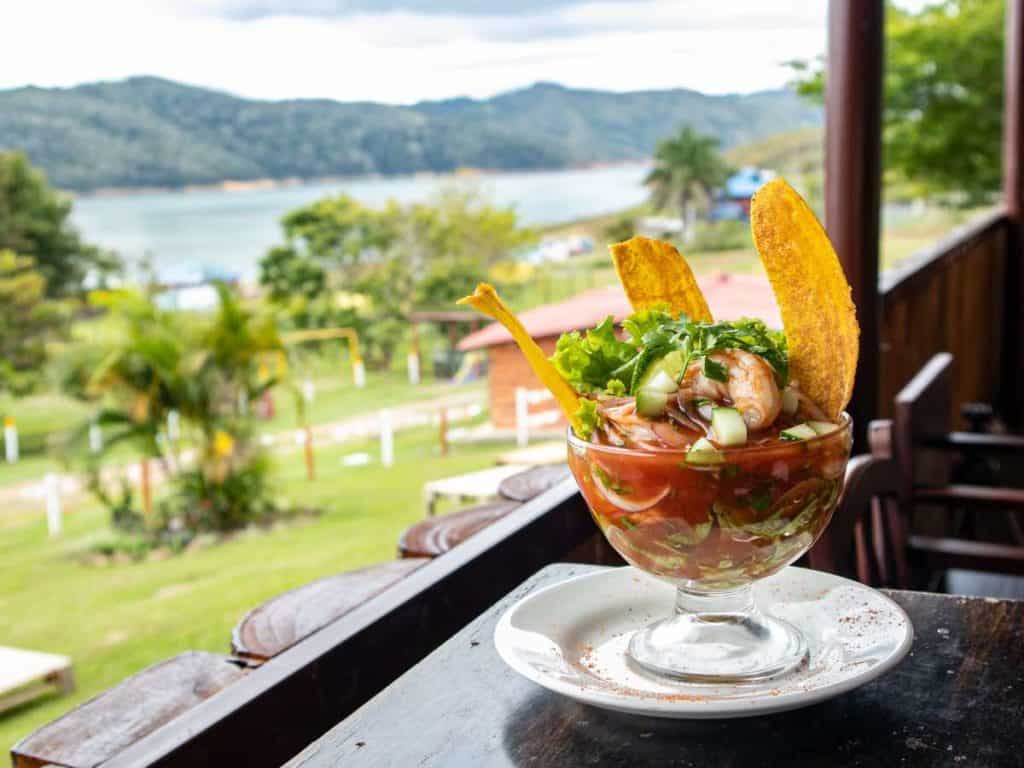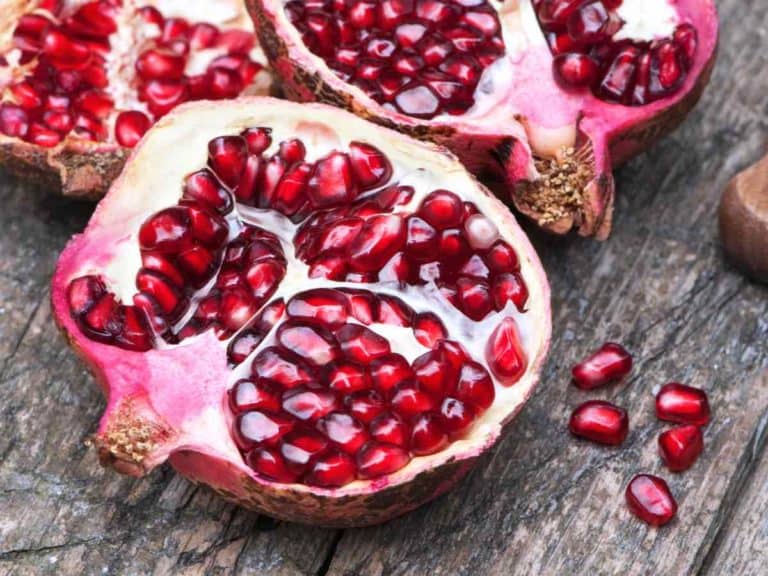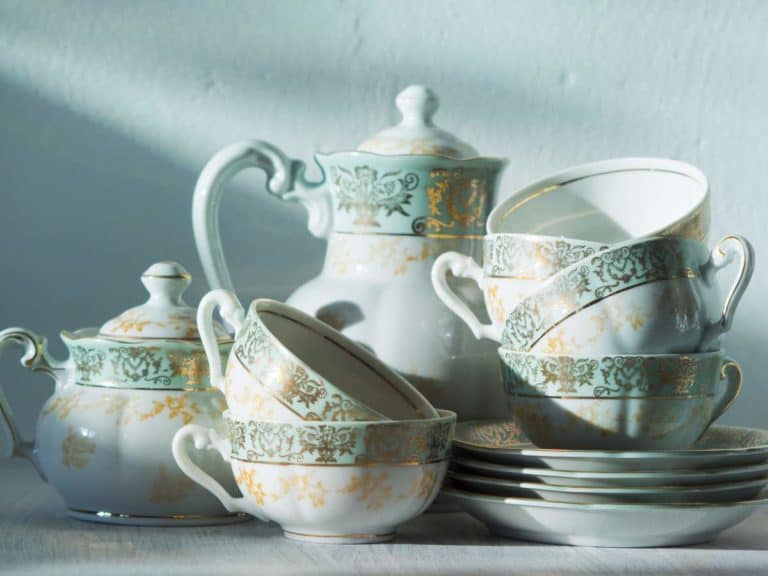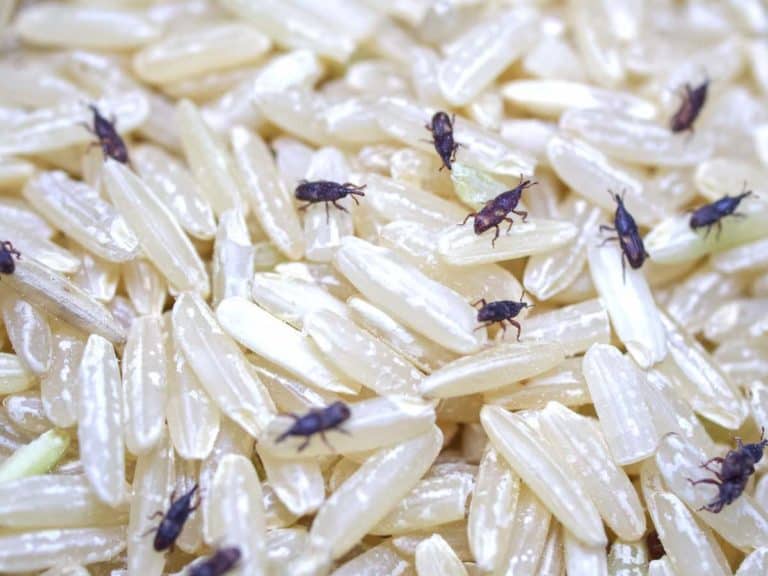What To Do With Leftover Ceviche? Practical Guide
As with any raw dish, like ceviche, it requires some special considerations when it comes to dealing with storage. This favorite seafood is cooked by the citric juices it is marinated in, in a process known as denaturing. But does it mean it will stay remain safe to eat for hours, or the next few days? Here’s what to do with leftover ceviche.
Ceviche is best served immediately and must be consumed upon serving. But if you do find yourself with leftover ceviche, just pour off as much of the marinade as possible, and put it in the airtight container in the fridge for best results. To freshen the flavor, just add a little more citrus juice over it the next day.
Since it is made from raw seafood, it is recommended to buy only the high-quality seafood when making ceviche, either the pre-frozen fish that was preserved before being exposed to any contaminants or the freshest seafood that is available.
How Long Does Ceviche Last At Room Temperature?

Depending on the storage conditions to know the estimated that ceviche can be good. Here are the following conditions, you should know:
In The Fridge
The shelf-life of ceviche in the fridge depends on different factors, but typically it will be good for two days. The biggest reason is that, unlike other raw meat, raw fish has a much faster spoilage rate.
If you eat rotten white fish, it can result in severe digestive diseases, like stomach aches, food poisoning. Therefore, it is necessary to stick to the two days principle to help such health problems.
By storing ceviche in the fridge, it may help in significantly increasing the shelf-life of the dish. It is because the lower the temperature and the humidity the food is stored can help in minimizing the production of bacteria that can cause food spoilage. Plus, the ceviche will not be accessed by animals such as insects that can affect the food quality.
Because the refrigerator can slow down the growth of bacteria, not kill them all, your ceviche will go bad after a few days. Also, keeping food in the refrigerator for too long can lead to degradation that produces harmful toxins for the body. If you do not use all of the ceviches in a couple of days, you may throw them away.
Reusing these foods can bring health risks that can cause dangerous diseases. Also, do not defrost the seafood dish too many times, because its nutritional value will decrease by 10 to 20% after each time.
At Room Temperature
The ideal amount of time you can leave ceviche at room temperature is about 1 to 2 hours. Although raw seafood is rich in natural vitamins and minerals, such as omega 3 fatty acids, vitamin A, vitamin D, and protein.
It is also a great shelter for various microorganisms, such as larvae and helminth eggs. So, even if the ceviche is treated to absorb the acids from the food, spoilage can still occur.
Normally, the average room temperature is about 25 degrees Celsius. According to experts at the US FDA, this is the temperature range where food decay is the most active. It takes only 20 minutes for the bacteria to double and ruin the ceviche.
Furthermore, the bacteria exist anywhere, including Staphylococcus, Salmonella, E.coli, Clostridium, and Campylobacter. These bacteria can all infect the food and can lead to consumers being poisoned or infected.
How To Tell If Ceviche Has Gone Bad?
It is pretty easy to tell if the leftover ceviche is still edible. Therefore, no need to worry about food poisoning anymore. The easiest way to answer this question is that if ceviche is still safe to eat if it does not smell. Ceviche has a cool smell of spices marinated with seasoning, and lemon.
It is reminiscent of a cool breeze flowing from the ocean, giving you the most enjoyable experience.
When spoiled, the freshwater fish for ceviche will have a sour smell like sour buttermilk. It is because the bacteria in the fish break down the chemicals in the food, and form smelly gases. As soon as you notice the sign of unpleasantness, it will help you get rid of ceviche right away.
Another way to know if it is safe to eat ceviche or not is to look and touch. As soon as it is spoiled, you will see on the surface of the raw fish is a layer of scum. It is a sign of molds that have begun to appear. Take note that molds are microscopic microorganisms that can only be seen in the microscope.
Yet, you can see them with the naked eye on the fish, proving that the amount of mold is enough. Moreover, touch the fish’s surface, if you find that there’s no more elasticity, you can now discard the ceviche.
How To Preserve Leftover Ceviche?
Put it in the airtight container
Food storage boxes can help in extending the shelf-life of food and keep the food from drying out, spreading, and absorbing odors.
Furthermore, the food container helps in organizing the kitchen space and refrigerator space, making the living space and the dining space more convenient, neat, and modern.
Storing the food in reusable food airtight containers is one of the best ways to lessen the amount of plastic wrap and styrofoam waste.
Related Article: Top 9 Best Leak-Proof Food Storage Containers
Use vacuum airbag
The theoretical vacuum environment is the environment that does not contain any matter inside it, such as oxygen, dust, carbon dioxide, and bacteria. It is the perfect condition for keeping perishable foods, such as ceviche.
When using a vacuum bag, you have created a relative vacuum by drawing all the air around the food surface. Close the airbag, and this will help prolong the preservation of fresh food 3 to 5 times longer than conventional food preservation methods. This method will also retain the maximum amount of nutrients and original flavor in the food.
Related Article: Best Vacuum Sealers
Use it in recipes
If you don’t know what to do with leftover ceviche, you can incorporate it with recipes. Here is a good recipe where you can use your leftover ceviche.
Lettuce Tacos with Fried Ceviche
Ingredients:
- 1/2pound white fish from a sustainable fishery, in 2 cm strips
- 4limes (juice)
- 1/2red onion, cut into julienne
- 1/2pepper, cut into julienne
- 1teaspoon of limo pepper, paste (optional)
- 1garlic clove smashed
- 1/2inch fresh ginger, grated
- Salt to taste
- 2tablespoons chopped parsley
- 2red radishes, in thin slices
- 1avocado, in thin slices
- 8leaves of iceberg lettuce
- 1/2cup panko
- 1/2cup organic peanut oil (or vegetable oil)
- 1sweet potato, boiled, peeled, and diced
Instruction:
- Mix 3/4 lime juice, garlic, ginger, salt, and limo pepper. Marinate the fish in this mixture for 5 minutes.
- Mix pepper, onion, salt, parsley, radish, avocado, and 1/4 lime juice.
- Heat the oil on a skillet at medium heat.
- Put the panko on a plate and place the pieces of fish to cover them with panko. Fry them until golden brown (about 5 minutes) and put them on a paper towel to drain excess oil.
- Place the lettuce leaves on each plate, and fill them with a bit of the onion and pepper mixture (salsa Criolla).
- Place some pieces of fish on the onion and cover them with more sauce.
- Complement with sweet potato.

How To Make Ceviche Safely?
Everybody needs to figure out how to make ceviche, and, while ceviche recipes are everywhere, a basic ceviche is, pretty much, pico de gallo with fish or fish in it.
Ceviche is one of those apparently elusive dishes that Americans have genuinely embraced, particularly those of us who live genuinely close to the sea. A Peruvian invention, the first ceviche recipe is fish or fish marinated in citrus juices, which then, at that point “cook” the fish.
The citrus bath the fish or fish sits in turns the meat opaque, giving it the presence of being cooked, and it kills a portion of the many small beasties present in raw food that can make you sick, especially the toxin vibrio. And the ceviche-making process will not protect you from the worst enemies, ranging from salmonella to parasites and worms.
Certain types of fish tend to be more or less prone to parasites. So the best fish for ceviche are those you would see on a trip to the sushi bar. Fish, like tuna and other pelagic species, will in general be free from parasites (swordfish being a remarkable exemption), as is farmed salmon (oddly). However, have you noticed that mackerel (saba) is constantly cured?
It is because it can regularly contain anasakis worm larvae, otherwise called seal worms. Everything in the cod family is particularly prone to infestation, that’s why you never see cod sushi.
Here in the West, Pacific salmon, rockfish, and halibut are notable to harbor anasakis larvae, and to be protected you should freeze your fish before eating it raw.
Furthermore, when I mean freezing I mean truly freezing. You need the fish to hit – 4°F for about seven days to get the job done. Note that traditional home freezers never hit this temperature.
By far, most of the ailments you may get from eating spoiled or parasite-loaded raw fish will be moderate to light. It’ll feel like food contamination, with cramps, nausea, and a serious case of the trots.
It is because in most cases, humans are not the definite hosts, which means the parasite has met a dead end. Seal worm is a great example. The seal worm (anasakis) is around any place there are seals and sea lions — they are the “definitive host” for that parasite.
So, when you eat raw, spoiled salmon, the worm will enter your system and attach to your intestines. But the worm will discover soo enough that the thing it attaches to is not a sea lion, so it will do eventually, but not before making you sick.
Bad idea. By no means, you should not eat freshwater fish raw or in ceviche that has not been frozen properly. Take note that the best way to get rid of a tapeworm, which can grow longer than 20 feet in your gut is to take a medication that will kill it, such as antihelminthics. At that point, you need to eject that thing.
Since I’ve freaked you all out, here’s some good news: Actual ailment from parasites and such is really uncommon. I’ve known people who’ve eaten fresh raw salmon for quite a long time without becoming ill, and raw Pacific salmon is one of the fish with the most elevated rate of tapeworm and seal worm pervasion.
Furthermore, you can endlessly work on your odds of keeping away from parasites in your fish by killing the fish immediately when it comes overboard, draining it, and gutting it ASAP. This last bit is the most significant because basically, all the parasites hang out in the viscera of fish, not the meat.
Most of the time, the meat gets spoiled because when the fish dies the dust the parasites panic and burrow into the meat.
Whenever it’s been appropriately frozen, you can extend its shelf life. A traditional Peruvian ceviche recipe usually has onions, chiles, cilantro, and sometimes corn and tomatoes. Some people serve them alongside tortilla chips, which is fantastic for a light dinner or just when you’re watching football.
Marinating time can significantly affect the quality of ceviche. Depending on the size of the fish pieces, it will take at least 30 minutes to an hour for the citrus to “cook” the fish. Two hours is ideal, but beyond that time, the ceviche, though still good, becomes more of a pickled fish. It’s just a mild difference, but you can still notice it in the tongue.
Citrus must be considered too. You always want how strong the citrus in the marinade using either limes or lemons, which are more acidic than oranges, grapefruits, or tangerines. Incorporate these fruits to enhance the flavor of the ceviche. You may also add a little grapefruit to the mix.
Bad idea. By no means, you should not eat freshwater fish raw or in ceviche that has not been frozen properly. Take note that the best way to get rid of a tapeworm, which can grow longer than 20 feet in your gut is to take a medication that will kill it, such as antihelminthics. At that point, you need to eject that thing.
Since I’ve freaked you all out, here’s some good news: Actual ailment from parasites and such is really uncommon. I’ve known people who’ve eaten fresh raw salmon for quite a long time without becoming ill, and raw Pacific salmon is one of the fish with the most elevated rate of tapeworm and seal worm pervasion.


![How to Store Pizza [Freeze, Thaw, Seal, etc]](https://foodwine.com/wp-content/uploads/pizza-794244712-768x576.jpg)


